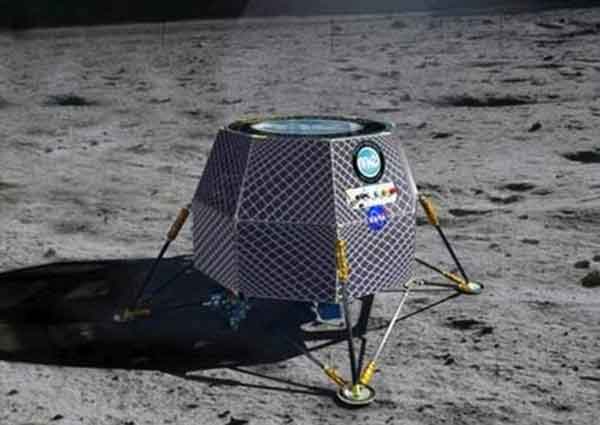當(dāng)前位置: Language Tips> 雙語新聞
Nasa to try growing vegetables and herbs on the moon
分享到

|
Nasa is to try growing vegetables and herbs on the moon to see if humans could one day live there. The US space agency plans to send seeds to the moon in 2015 in sealed canisters containing everything that is needed for the seedlings to thrive. As well as ten seeds each of basil and turnips, there will also be around 100 seeds of Arabidopsis, a small flowering plant related to cabbage and mustard. On landing, a trigger will release a small reservoir of water inside the canister and a team on Earth will monitor how the seeds germinate when exposed to lunar gravity and radiation. A group of scientists, students and volunteers - known as the Lunar Plant Growth Habitat team - are behind the project which will see the seedlings photographed at intervals to compare with those planted on earth. The air in the sealed containers should be adequate for more than 5 days of growth. A Nasa spokesman said: ‘They can test the lunar environment for us, acting as a canary in a coal mine. 'If we send plants and they thrive, then humans probably can.' Thriving plants need the same ingredients for life as humans – food, water and air – and also provide psychological comfort for people, demonstrated by the popular greenhouses in Antarctica and the International Space Station. Nasa plans on sending the seedlings to the moon by hitching a lift on a commercial spacecraft called the Moon Express lander, which is competing to win Google’s Lunar X-Prize in 2015. Scientists are currently constructing a unit to study the germination of the plants, which will have a mass of just one kilogram and will be deposited on the moon. Water will be added to the seeds in the module after landing and their growth will be monitored for five to 10 days and compared to Earth-based control seedlings. Seeds will include Arabidopsis, basil, and turnips and Nasa says the experiment will be the first of its kind on another world and ‘a(chǎn)n important first step in the utilisation of plants for human life support’. Follow-up experiments will improve the technology in the growth module and allow for more extensive plant experiments, the organisation said. Survival for 14 days demonstrates plants can sprout in the moon’s radiation environment but survival to 60 days demonstrates that sexual reproduction (meiosis) can occur in a lunar environment. Survival to 180 days shows effects of radiation on dominant and recessive genetic traits and afterwards, the experiment may run for months through multiple generations, increasing science return. |
人類未來能否在月球上生活?科學(xué)家打算先嘗試在月球種菜。據(jù)英國《每日郵報(bào)》網(wǎng)站12月1日?qǐng)?bào)道,美國國家航空航天局(NASA)決定在2015年去月球上種植蔬菜和草本植物,以此來測(cè)試月球是否適合人類生存。 這項(xiàng)月球種菜計(jì)劃由“月球植物生長棲息地”團(tuán)隊(duì)推動(dòng)促成,該團(tuán)隊(duì)里既有科學(xué)家,也有學(xué)生和志愿者,他們的目的是研究植物暴露在月球的重力與輻射環(huán)境下的生長情形。 按照計(jì)劃,美國國家航空航天局將在2015年通過一艘名為“月球快遞登陸艇”的商業(yè)太空船把一個(gè)特制密封罐送往地球。密封罐里有10粒羅勒種子、10粒蘿卜種子和大約100粒擬南芥種子,以及適合這些植物生長5至10天的生長要件,例如包含養(yǎng)分的濾紙、足夠植物生長超過5天的空氣等。 特制密封罐抵達(dá)月球后,一個(gè)觸發(fā)器將被啟動(dòng)、向罐內(nèi)的植物澆水。與此同時(shí),經(jīng)由放置于密封罐中的攝像頭和傳感器,植物的生長過程將被全程記錄并傳送回地球的研究團(tuán)隊(duì)手中,對(duì)比植物在地球與月球兩地的生長差異。 植物生長所需的成分與人類相似,它們也需要食物、水分和空氣,并且還能為人類提供心理慰藉。 此次月球種菜計(jì)劃可謂“前無古人”,如果成功,距離人類在月球上生活,也能夠更近一步。若植物成功生長達(dá)14天,則意味著植物能在月球環(huán)境下發(fā)芽;若植物成功生長達(dá)60天,則說明植物在月球上能進(jìn)行有性繁殖;若植物成功生長達(dá)180天,則可看出輻射環(huán)境對(duì)基因的影響。 美國國家航空航天局認(rèn)為,種子與人類都對(duì)外在環(huán)境條件具備敏感度,前者有時(shí)甚至高于后者。“利用這點(diǎn),植物便可以替人類測(cè)試月球環(huán)境。這也是透過植物尋求人類生存問題貢獻(xiàn)上的重要第一步。”該局一位發(fā)言人表示,“如果植物能夠在月球上生長,人類或許也可以在月球上生活。” 相關(guān)閱讀 美軍最先進(jìn)反潛機(jī)抵達(dá)日本 將在東海地區(qū)進(jìn)行監(jiān)察飛行 印度官員創(chuàng)立婚戀網(wǎng)站 助艾滋病感染者成婚者 擔(dān)心戰(zhàn)時(shí)影響發(fā)射速度 美國核彈發(fā)射密碼曾為8個(gè)0 (譯者 肉肉融 編輯 王輝) |
分享到
關(guān)注和訂閱


關(guān)于我們 | 聯(lián)系方式 | 招聘信息
電話:8610-84883645
傳真:8610-84883500
Email: languagetips@chinadaily.com.cn